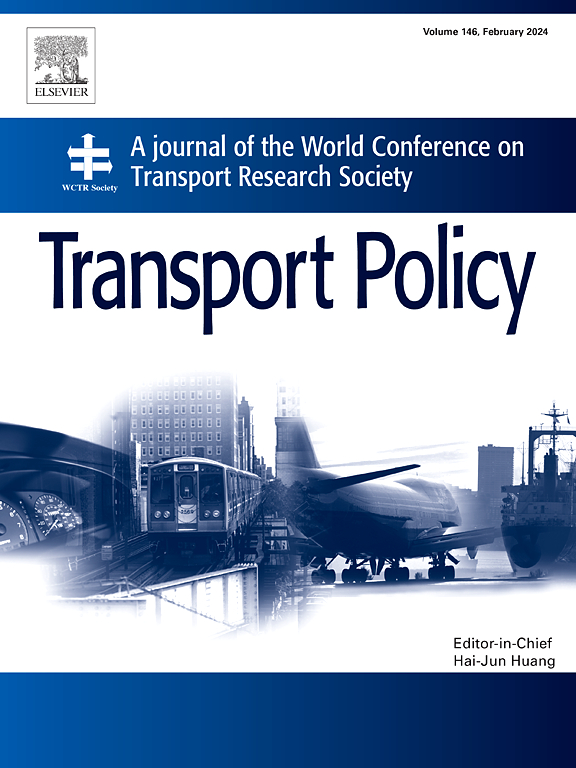A multi-stage game framework for new route promotion: Behavioral strategy and dynamic evolution of shippers, carriers, and governments
IF 6.3
2区 工程技术
Q1 ECONOMICS
引用次数: 0
Abstract
New freight routes are being planned and emerging globally, but often rely on government subsidies to enhance their competitiveness during the initial promotional phase. This study proposes a multi-stage game framework to explore the influence mechanism of behavioral strategies among three stakeholders: shipper, carrier, and government. Based on the assessment of shippers’ route choice preferences, we examine the dynamic evolution of carriers’ and governments’ behavioral strategies in the practical context of bounded rationality and dynamic learning. We theoretically derive the evolutionary paths and stable outcomes of dynamic systems across eight scenarios encompassing all the possible practical values to be taken, which provide broader and more valuable decision support for new route promotion. Finally, the feasibility and validity of the proposed model are verified by the actual case of the New International Land-Sea Trade Corridor. The findings indicate that government subsidies are not always effective and provide a precise subsidy range that can incentivize carriers to switch to the new route. Moreover, the study clarifies the impact of key factors such as subsidy, tax, route reliability, transportation time, and time value of cargo on the promotion of new routes through numerical simulation, and provides feasible management recommendations for government and route operations.
新航线推广的多阶段博弈框架:托运人、承运人和政府的行为策略与动态演变
新的货运航线正在全球范围内规划和兴起,但在初期推广阶段往往依赖政府补贴来提高竞争力。本研究提出了一个多阶段博弈框架,以探讨托运人、承运人和政府三个利益相关者之间行为策略的影响机制。基于对托运人线路选择偏好的评估,我们在有界理性和动态学习的实际背景下考察了承运人和政府行为策略的动态演化。我们从理论上推导出了八种情景下动态系统的演化路径和稳定结果,涵盖了所有可能采取的实用价值,为新航线推广提供了更广泛、更有价值的决策支持。最后,通过国际陆海贸易新通道的实际案例验证了所提模型的可行性和有效性。研究结果表明,政府补贴并不总是有效的,并提供了一个精确的补贴范围,可以激励承运商转向新航线。此外,研究还通过数值模拟阐明了补贴、税收、航线可靠性、运输时间、货物时间价值等关键因素对新航线推广的影响,为政府和航线运营提供了可行的管理建议。
本文章由计算机程序翻译,如有差异,请以英文原文为准。
求助全文
约1分钟内获得全文
求助全文
来源期刊

Transport Policy
Multiple-
CiteScore
12.10
自引率
10.30%
发文量
282
期刊介绍:
Transport Policy is an international journal aimed at bridging the gap between theory and practice in transport. Its subject areas reflect the concerns of policymakers in government, industry, voluntary organisations and the public at large, providing independent, original and rigorous analysis to understand how policy decisions have been taken, monitor their effects, and suggest how they may be improved. The journal treats the transport sector comprehensively, and in the context of other sectors including energy, housing, industry and planning. All modes are covered: land, sea and air; road and rail; public and private; motorised and non-motorised; passenger and freight.
 求助内容:
求助内容: 应助结果提醒方式:
应助结果提醒方式:


